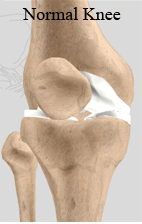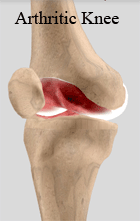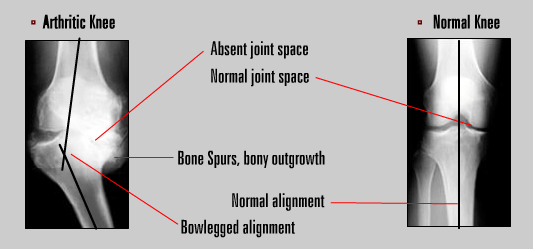|
If only a single compartment of the knee is worn out, then it may be possible to replace only the
worn out component. This is usually done via a minimally invasive approach and the recovery time
is much quicker. A 7 to 10cm skin incision is used and the kneecap is not reflected. The worn out
surface is prepared. The femur and tibia is usually glued or press-fitted in place. The patient can be mobilised four to six hourly post-operatively
and can go home after one to three days depending
on the amount of pain experienced.



Risks and complications are similar to a total knee replacement. Depending on the type of uni-compartmental knee replacement, this type of replacement may last seven to ten years or even
longer. Some replacements are more like a retread.
As anybody undergoes general or regional anesthesia (epidural anesthesia) there are always
risks associated with it. The risks of course are magnified if you have abnormal general medical conditions in addition to your older age, which may have affected the functions of your vital organs
such as heart, lungs and kidneys. Therefore a complete evaluation of those systems has to be performed before you are taken to the Operating theatre.
- This is prevented by giving blood thinners and if it occurs it is
treated
with specific blood thinners, usually Warfarin.
- The risk of infection is less than 1% and pre-operative antibiotics are given
to
prevent this from happening.
- Occasionally knee replacement may stiffen up particularly in patients who are significantly overweight or have diabetes. Occasionally one will require a manipulation
under
an anaesthetic should this occur.
-
It is unlikely that any major nerve or vessel will be damaged.
It
is unlikely that any major nerve or vessel will be damaged. It is, however, very common
to
have a small area of numbness over the other side of your knee where a superficial
skin
nerve is always cut during the surgery. This little numb patch is of no significance.
- The prosthesis may fail due to the plastic wearing out and it may
require revision.
- Very rarely a condition can occur where the leg becomes
stiff, hypersensitive and painful. This requires specific treatment with a pain management specialist.
- This usually settles but may require drainage.
- Some skin will scar up significantly (keloid).
- Occasionally this may occur and require drainage. It is
usual
for knees to be a little swollen and a little warm.
- Kneeling may produce discomfort over the incision site.
If the patello-femoral joint is the only part that is worn out, then this can be replaced similarly to
a uni-compartmental knee replacement. The incision is similar to a total knee replacement but
naturally less bone is removed. A total knee replacement may be required in the future.

|




